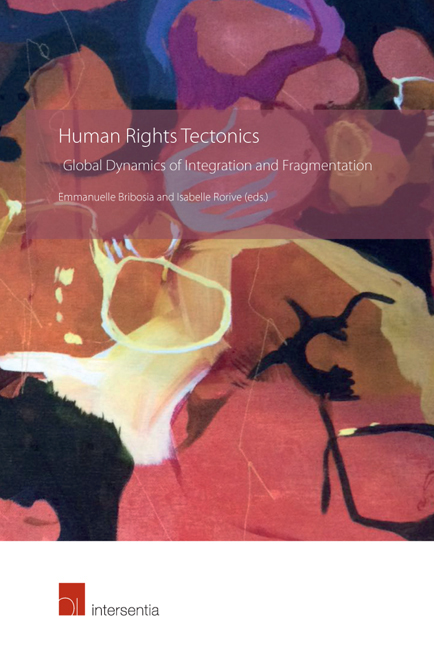Book contents
- Frontmatter
- Foreword
- Contents
- List of Cases
- List of Contributors
- Introduction to Human Rights Tectonics
- PART I PROMISES AND CHALLENGES OF AN INTEGRATED APPROACH TO HUMAN RIGHTS
- PART II HUMAN RIGHTS TECTONICS THROUGH AN ISSUE-BASED APPROACH
- PART III HUMAN RIGHTS DYNAMICS IN EUROPE
- The European Union in the International System of Human Rights Protection: Solo Singer or Voice in the Choir?
- Opinion 2/13 as a Game Changer in the Dialogue between the European Courts?
- Sharing of the Burden of Proof in Cases on Racial Discrimination: Concepts, General Trends and Challenges before the ECtHR
- Rethinking the Two Margins of Appreciation
- About the Editors
Rethinking the Two Margins of Appreciation
from PART III - HUMAN RIGHTS DYNAMICS IN EUROPE
Published online by Cambridge University Press: 31 January 2019
- Frontmatter
- Foreword
- Contents
- List of Cases
- List of Contributors
- Introduction to Human Rights Tectonics
- PART I PROMISES AND CHALLENGES OF AN INTEGRATED APPROACH TO HUMAN RIGHTS
- PART II HUMAN RIGHTS TECTONICS THROUGH AN ISSUE-BASED APPROACH
- PART III HUMAN RIGHTS DYNAMICS IN EUROPE
- The European Union in the International System of Human Rights Protection: Solo Singer or Voice in the Choir?
- Opinion 2/13 as a Game Changer in the Dialogue between the European Courts?
- Sharing of the Burden of Proof in Cases on Racial Discrimination: Concepts, General Trends and Challenges before the ECtHR
- Rethinking the Two Margins of Appreciation
- About the Editors
Summary
The margin of appreciation doctrine is widely commented on, but commentators have nevertheless not been able to explain it to a satisfactory level of clarity. Some works do exist that endeavour to theorise on the doctrine as such,but the literature has generally been more focused on describing the different situations in which it may be applicable, and the different factors that may influence it. The literature theorising the doctrine also remains very eclectic and it seems that the only common themes that have emerged are that the doctrine has multiple forms and that the Court should do more to clarify its contours and underlying rationale.Indeed, in 2012 it was argued that ‘startlingly little’ had been written on the conceptual elements of the doctrine, and with respect to offering a justification for it. The more recent literature has been somewhat focused on arguing that certain aspects of the doctrine could be improved and/or better justified by developing assessment of the quality of domestic procedures as one of the key indicators for strictness or leniency of review,or as tools to augment the Court 's review in cases where a wide margin of appreciation would otherwise be implied. It has also been argued that such ‘procedural review’ could even in many situations replace the Court's ‘substantive review’ on the merits of a case, making the margin of appreciation doctrine redundant in these cases.
Theoretical accounts focused on conceptualising the doctrine as a whole, however, remain few and far between. Recent key contributions of that genre are provided in the works of George Letsas and Andrew Legg, and the scope of this chapter will be focused on addressing the disagreement that exists between them on how the key element(s) or function(s) of the doctrine should be conceptualised. For reasons that will be explained below, the starting point will be taken in Letsas ‘ famous identification of a distinction between two concepts of the margin of appreciation, but a rethought conceptualisation will be suggested with different contours and a clearer dividing line between the two key elements of the doctrine. The aim of this chapter, therefore, is making the margin of appreciation doctrine more intelligible through relatively comprehensive theory building.
- Type
- Chapter
- Information
- Human Rights TectonicsGlobal Dynamics of Integration and Fragmentation, pp. 303 - 330Publisher: IntersentiaPrint publication year: 2018



